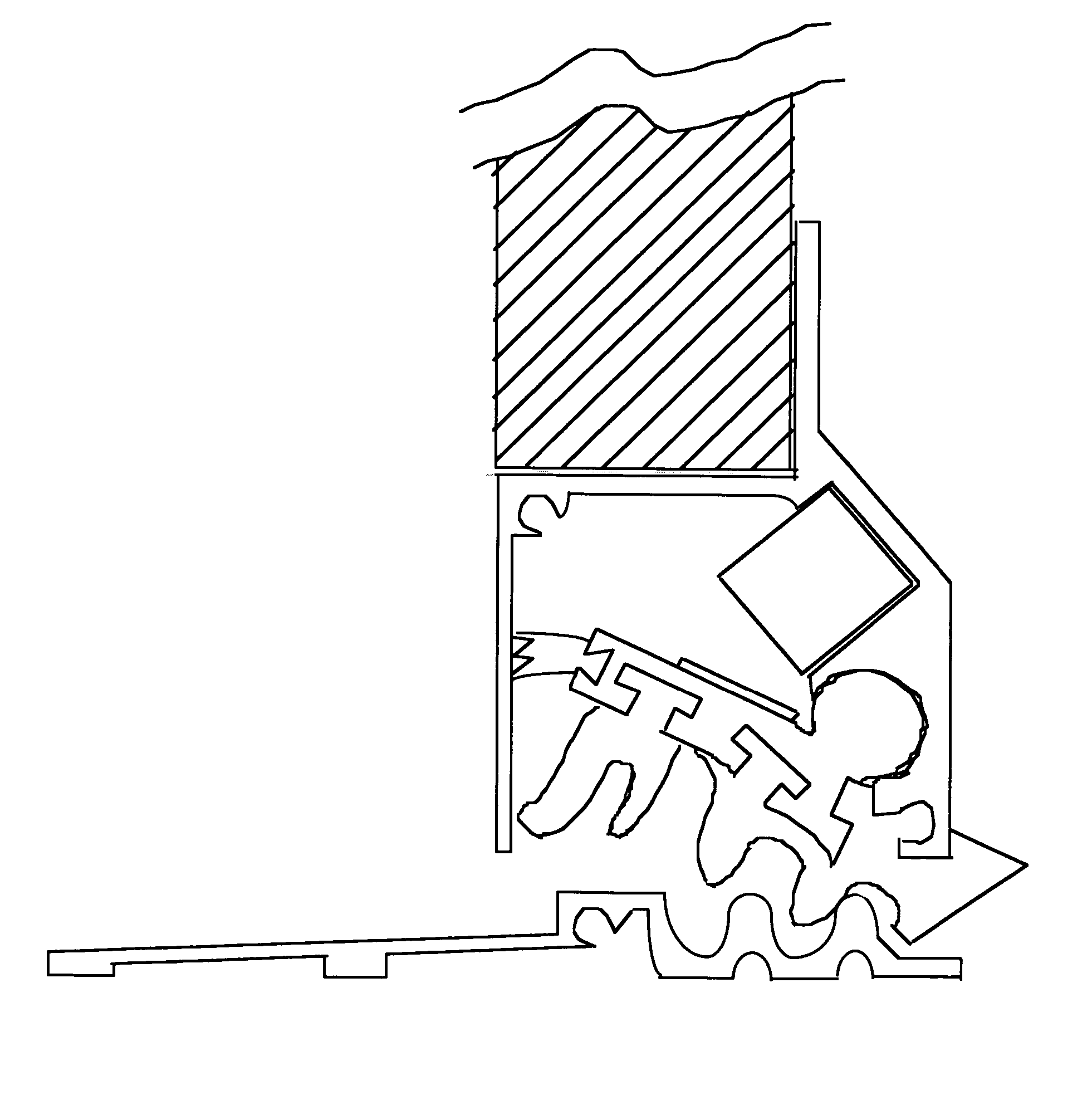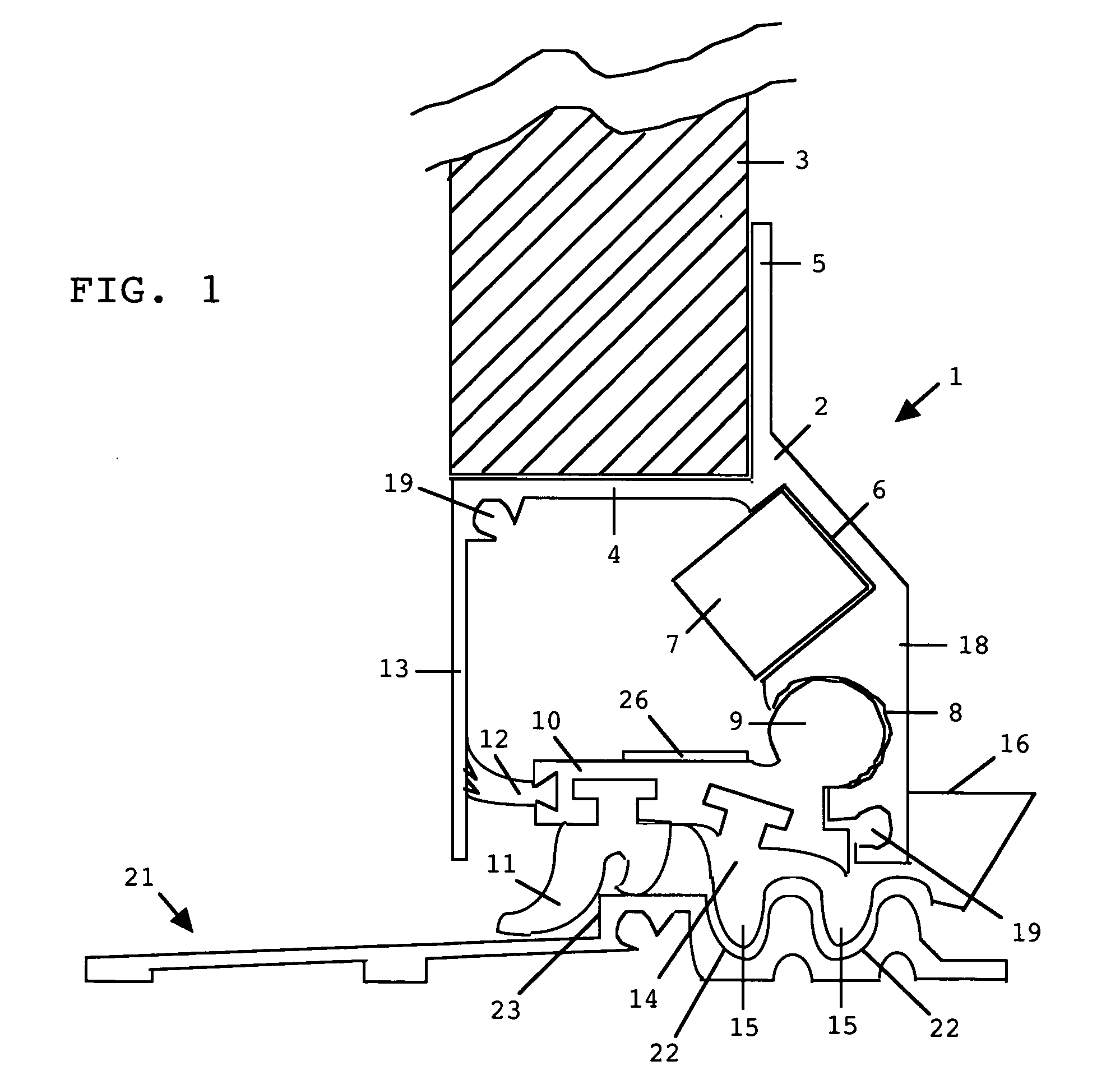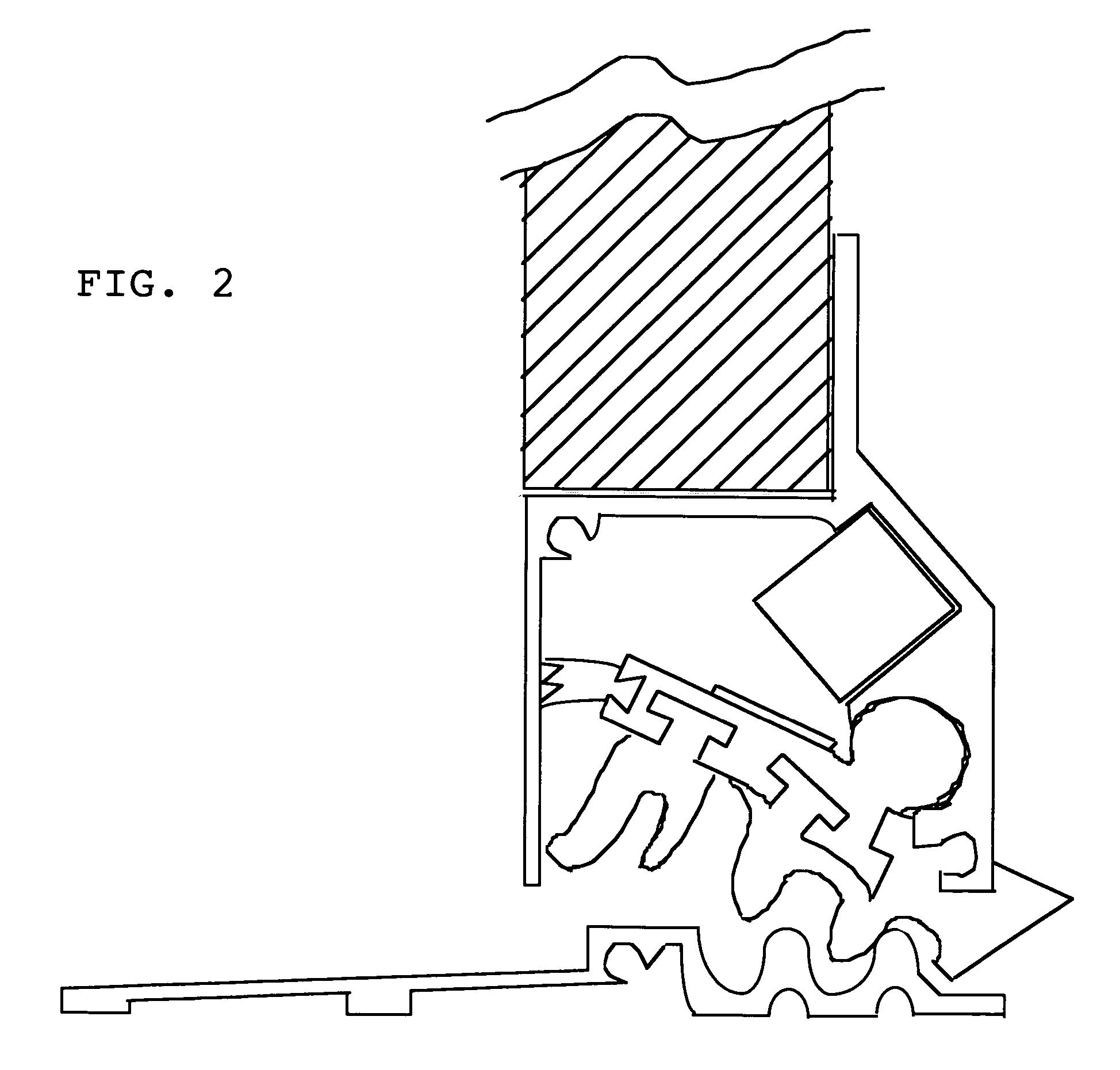Automatic door bottom and sill assemblage
a door bottom and automatic technology, applied in the field of assemblage, can solve the problems of large, more expensive structure, and new water-infiltration problems around the perimeter of the door-bottom device, and achieve the effect of easy trimming to length
- Summary
- Abstract
- Description
- Claims
- Application Information
AI Technical Summary
Benefits of technology
Problems solved by technology
Method used
Image
Examples
Embodiment Construction
[0036] The detailed embodiments of the invention disclosed herein are merely exemplary of the invention which may be embodied in other forms, and therefore are not intended to be limiting in nature. Reference numbers of parts are shown in FIG. 1 and FIG. 4, but not in FIG. 2 and FIG. 3., since the viewable parts in the latter are exactly the same as those in FIG. 1.
[0037] The sealing mechanism 1 consists of a generally inverted h-shaped housing 2 which is fastened to the bottom of—and runs the width of—an exterior door 3. (The fasteners, not shown, could pass into the door 3 through the horizontal part 4 of the housing 2 and / or through the flange 5 located on the interior side of the door 3.)
[0038] Integral to the housing 2 are an elongated recess 6 for accommodating a generally square magnet 7 at any point along its width and a tubular recess 8, open on one side, containing a separate rotating cylindrical shaft 9 with an arm extension 10 to the underside of which is fastened a fl...
PUM
| Property | Measurement | Unit |
|---|---|---|
| Electrical resistance | aaaaa | aaaaa |
| Flexibility | aaaaa | aaaaa |
Abstract
Description
Claims
Application Information
 Login to View More
Login to View More - R&D
- Intellectual Property
- Life Sciences
- Materials
- Tech Scout
- Unparalleled Data Quality
- Higher Quality Content
- 60% Fewer Hallucinations
Browse by: Latest US Patents, China's latest patents, Technical Efficacy Thesaurus, Application Domain, Technology Topic, Popular Technical Reports.
© 2025 PatSnap. All rights reserved.Legal|Privacy policy|Modern Slavery Act Transparency Statement|Sitemap|About US| Contact US: help@patsnap.com



